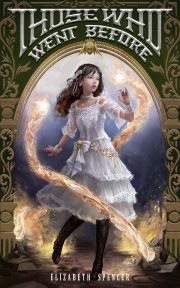Active Reading to Step Up Your Writing
by Corrine Kumar
We grow as writers by reading, but we often read passively—leaving the understanding of stories to our subconscious. Passive growth is important, but active reading can raise our storytelling to new heights. Over the last two years, I have developed a system of actively reviewing each novel I read, and this process has led to a significant improvement in my own writing. Though reviews are, by their nature, subjective, it is the process of actively reviewing novels itself that helps us get the most out of reading as writers.
The first step in my active review system is listing all aspects of a work you would classify as “good.” Here, I define “good” as authors successfully executing a narrative choice. Next, determine why the narrative choice worked for you and how you can apply this in your own writing. In Brandon Sanderson’s Mistborn, for example, I truly love the main character, Vin. Her character flaw, distrust of others, is a result of the need to survive amongst duplicitous thieving crews. A lesson one could take from this is that distrust of others is an inherently interesting flaw that would add something to any story. Digging deeper, however, there is a broader lesson: Flaws are most compelling when we understand their source and when the flaw was previously an advantage.
The second step is listing the aspects that you would classify as “bad,” meaning that there is a failure in the execution of a narrative choice. Then, determine why the narrative choice failed and what you would do to “fix” it. For example, in a book I read recently, the main character starts out unable to use or control her magic, but at the end, uses her powers in a significant way to save herself and her friends. Though the end scene was both vivid and beautiful, I found that the moment lacked emotional resonance. The reason for this, I felt, was that we did not get to see the main character’s progress from “zero-to-hero” throughout the novel. Because we did not see her struggling with her powers—trying and failing again and again and again—the moment when she does succeed falls flat, and we do not get our “stand-up-and-cheer” moment.
Finally, list all aspects of a work you would classify as “not for me.” “Not for me” means the author successfully executed a narrative choice that you disagreed with. Next, ask three questions: 1) Why did you disagree with the narrative choice? 2) What would you have done instead? and 3) What did the writer gain by making this narrative choice? For example, in one of my favorite books, a character who previously could not use magic develops the ability to do so by the end. I disagreed with this choice but felt that the author executed this transformation well. I found that I preferred the character’s internal struggle about his role in the ongoing conflict in comparison to his more magically powerful companions. However, I recognized that by making this choice, the author was able to have this character participate more directly in the conflict and highlight interesting aspects of the magic system by contrasting his use of magic against that of the others.
The core principle of this method is that it requires us to ask why a narrative choice is or isn’t working and to consider how we can apply what we’ve learned to our own writing. So, whether you use this method, a hybrid version, or one that is uniquely your own, I would encourage you to keep this core principle in mind. Aside from the act of writing itself, reading has the potential to be our greatest teacher. The books you can’t bear to put down, the ones you close feeling confused, the ones you chuck across the room because you can’t believe what happened, the ones you nearly give up on a dozen times but finish anyway, the ones that leave you unsatisfied, and the ones you recommend to anyone willing to listen–every single one has something to teach you. Read as a writer and take advantage of everything books (and their authors) have to show you.
 Corrine A. Kumar is a science fiction and fantasy writer with a love of martial arts. She has been a student and apprentice instructor of Hapkido, Jeet Kune Do, and Kali. Her greatest writing influences are Brandon Sanderson, Fonda Lee, Pierce Brown, and Christopher Ruocchio. She studied Chemistry and Neuroscience at Indiana University—Bloomington and is now a medical student at Indiana University School of Medicine. She is also an alumnus of the Futurescapes Writers’ Workshop. Corrine can be found on Twitter, Instagram, and Bluesky.
Corrine A. Kumar is a science fiction and fantasy writer with a love of martial arts. She has been a student and apprentice instructor of Hapkido, Jeet Kune Do, and Kali. Her greatest writing influences are Brandon Sanderson, Fonda Lee, Pierce Brown, and Christopher Ruocchio. She studied Chemistry and Neuroscience at Indiana University—Bloomington and is now a medical student at Indiana University School of Medicine. She is also an alumnus of the Futurescapes Writers’ Workshop. Corrine can be found on Twitter, Instagram, and Bluesky.


